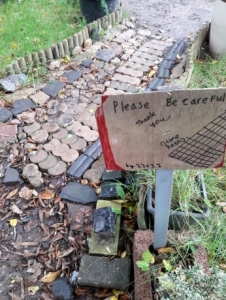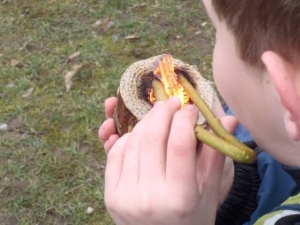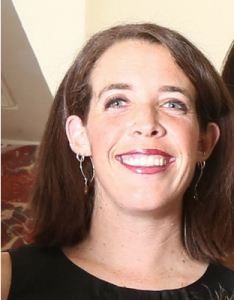Top Tips for Middle Leaders
Steve Garnett, Senior Education Consultant, Dragonfly Training.
As a newly appointed or existing middle leader starting this new academic year, there is no question you will be entering unchartered waters in terms of knowing what to expect as the world attempts to navigate its way through the Covid19 pandemic.
These ‘Top Five Tips’ for middle leaders are designed not just for this period but hopefully will serve you well at any time too.
Some of them may have a slightly irreverent feel to them (and intentionally so!) but nonetheless will still support you in being entirely effective in the role. So here they are:
1. Top Tip: Always ask the same question: ‘Will it make the bike go faster?’
This seems an odd question for middle leaders of course but it relates to the notion of marginal gains. Briefly, David Brailsford revolutionised the success of the British Cycling Team with an approach known as the ‘aggregation of marginal gains’. Essentially improvements were driven by continually asking how any small adjustment or innovation made would ultimately result in faster cyclists. We can take this principle to middle leadership too. For every new initiative, process, resource, and strategy that is suggested or promoted, then the middle leader needs to know and also show how it will ultimately improve outcomes for pupils from where they currently are. Otherwise, why do it?
2. Top Tip: Remember the 3 Ps of: Personalities, Politics, and Performance
Try to always remember it is the last one you and your department are judged on and not the first two! What I try to promote is the idea is that way too much of your emotional energy and time can be taken up with dealing with the politics and personalities within your department. This can then lead to a reduction in energy and motivation on you to focus on things that are related to improving processes and outcomes. Keep asking yourself whether you are getting side-tracked by the first two Ps and not focussing enough on the last one! So remember the 3 Ps!
3. Top Tip: ‘Keep Sharpening the saw’
I’ve adapted this phrase a little from the best-selling book by Steven Covey ‘Seven Habits of Highly Effective People’ which has sold in excess of 25 million copies worldwide. His seven habits allude to behaviours very effective people adopt and many of them can be applied to middle leadership. The habit described as ‘sharpen the saw’ relates to a continuous search for new knowledge that will enrich, improve, and build on existing knowledge. The effective middle leader sees the importance of professional growth. This could be anything from keeping up to date with educational reading to seeking guidance from an ‘expert’ within a school in order to learn something new such as for example ‘timetabling’.
4, Top Tip: Model what you want
The effective middle leader realises that their team is always watching them! This means that they have to ‘walk the walk’ and ‘talk the talk’! Whether it’s meeting deadlines, approaches to teaching, and learning to the use of professional language with colleagues, you have to be the type of teacher you wish your team to be. We must of course recognise the differences we all have and indeed these should be celebrated. However, the effective middle leader recognises that for anything they expect from others they should be able to produce themselves. So always model what it is you want from others.
5. Top Tip: Smile for no good reason
This doesn’t mean appearing to have lost your marbles by having a continuous and unbroken smile on your face whatever the circumstances or situation! Instead, this tip alludes to the importance of managing your own emotional self. There are many psychological, physiological, and biological benefits to a smile! It’s a great stress buster for you but also potentially a great way to disarm a slightly stressed colleague or pupil! This tip really relates to the importance of you maintaining some kind of emotional sanity. Ask yourself: What strategies do you have for managing the emotional side of the role? Naturally, we would want those with zero negative health effects. So different people might draw on different approaches for example anything from mindfulness techniques to bouts of strenuous exercise or something in between. I would say however that the smile is one of the easiest ones and one that everyone can do!. So what technique do you have?
So, whilst this ‘Top Tips’ list may have a slightly irreverent feel, I do offer a more rigorous and detailed analysis of what is involved in becoming a highly effective middle leader when delivering my CPD courses.
I am delighted to be teaming up with ECIS to deliver the following 6 module course across this autumn term. It will lead to an accredited certificate in Middle Leadership called: ECIS/Dragonfly Middle Leader Award in Teacher Quality Improvement. Learn more and register here.
Module 1: The culture of leadership
Module 2: Designing learning
Module 3: Assessment and leadership
Module 4: Building and leading teams
Module 5: Developing your leadership style
Module 6: Leadership of learning
I will also be delivering a free webinar outlining what’s involved in being a highly effective middle leader and it will follow this 6 module outline. Joining details can be found here.
ABOUT THE AUTHOR
Steve Garnett is a Senior Educational Consultant at Dragonfly Training, an international speaker, and an award-nominated author and teacher. He has delivered INSET to over 8000 teachers in the last ten years across the British Isles as well as Europe, the Middle East, and the Far East. His book ‘The Subject Leader’ was shortlisted for the prestigious Education Resources Award 2013 (Best Secondary Resource).















 Photo by Diego PH on Unsplash
Photo by Diego PH on Unsplash






